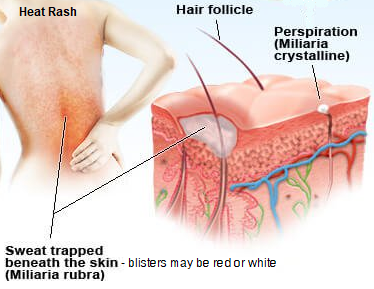Protecting Workers from Heat Stress
July 06, 2018
The body reacts to high external temperature by circulating blood to the skin which increases skin temperature and allows the body to give off its excess heat through the skin. However, if the muscles are being used for physical labor, less blood is available to flow to the skin and release the heat.
Sweating is another means the body uses to maintain a stable internal body temperature in the face of heat. Yet, sweating is effective only if the humidity level is low enough to permit evaporation and if the fluids and salts lost are adequately replaced.
The body cannot dispose of excess heat, it will store it. When this happens, the body’s core temperature rises and the heart rate increases. As the body continues to store heat, the individual begins to lose concentration and has difficulty focusing on a task, may become irritable or sick and often loses the desire to drink. The next stage is most often fainting and death is possible if the person is not removed from the heat stress.
The most serious heat illness is heat stroke. Other heat illnesses include heat exhaustion, heat cramps and heat rash. There are precautions that can be taken any time temperatures are high.
Risk Factors for Heat Illness
-
High temperature and humidity, direct sun exposure, no breeze or wind.
-
Heavy physical labor.
-
No recent exposure to hot workplaces.
-
Low liquid intake.
-
Waterproof clothing.
Symptoms of Heat Exhaustion
-
Headache, dizziness or fainting.
-
Weakness and wet skin.
-
Irritability or confusion.
-
Thirst, nausea or vomiting.
Symptoms of Heat Stroke
-
May be confused, unable to think clearly, pass out, collapse or have seizures (fits).
-
May stop sweating.
To Prevent Heat Illness
-
Establish a complete heat illness prevention program.
-
Provide training about the hazards leading to heat stress and how to prevent them.
-
Provide a lot of cool water to workers close to the work area. At least one pint of water per hour is needed.
-
Alternate work and rest periods.
If a work environment has consistent high temperatures and an employee is new or returns to work from an absence of two weeks or more, they should have a 5-day period of acclimatization. This period should begin with 50 percent of the normal workload and time exposure on the first day. Gradually build-up to 100 percent by the fifth day.
Employee education and awareness is vital. Keep an eye out for your coworkers, as well as yourself.
